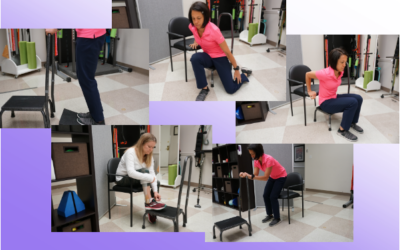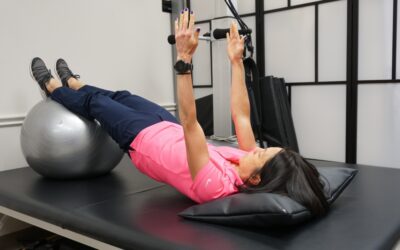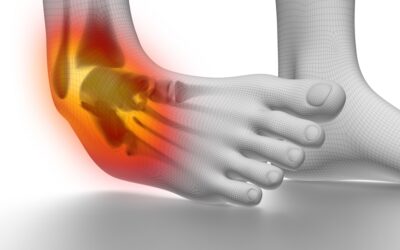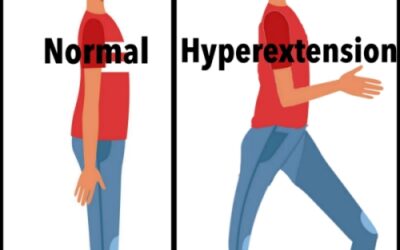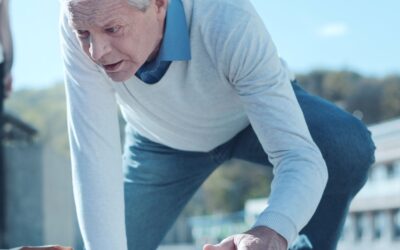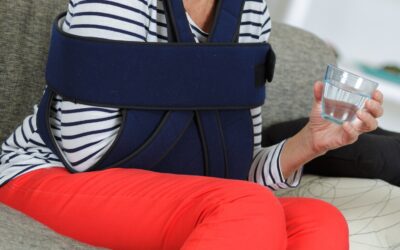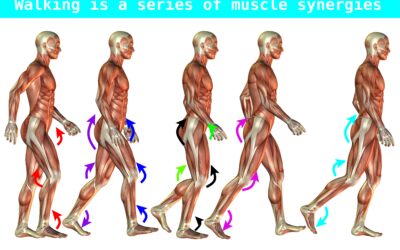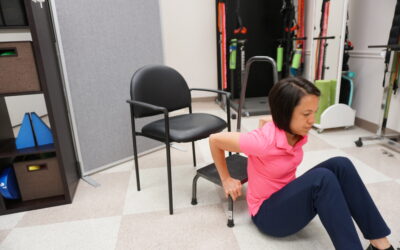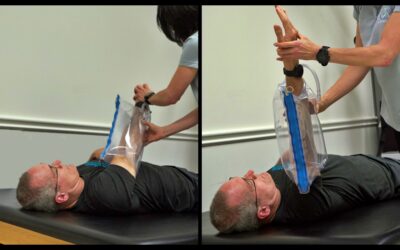HIIT for Stroke Recovery
Boost brain rewiring, improve movement, and speed recovery with short bursts of exercise.
If you’ve been on your stroke recovery journey for a while, you’ve probably heard the word neuroplasticity. Neuroplasticity is how your brain forms new connections so you can relearn skills like walking, talking, and using your hands again.
Important facts about neuroplasticity:
- It happens throughout your life, not just in the first 18 months after injury.
- Everyone with a neurological injury has the potential to improve.
- Progress isn’t just about repetition, the brain needs the right environment to rewire effectively.
What Happens in Your Brain During a Stroke?
A stroke happens when blood flow to part of your brain is blocked, or when a blood vessel in your brain bursts. This causes a sudden chaotic event inside your brain:
- Some brain cells (neurons) get damaged or die because they aren’t getting enough oxygen and nutrients.
- Other neurons around the damaged area go offline or stop working properly.
- The whole area becomes unstable and disorganized for a while.
This chaos actually primes your brain for neuroplasticity, meaning it becomes ready to rewire itself and make new connections to take over lost functions. That’s why getting into rehab as soon as possible is so important because it helps your brain take advantage of this window to start healing.
The Brain Chemicals That Make Neuroplasticity Possible
Three main “signaling molecules” help your brain form new connections:
- BDNF (Brain-Derived Neurotrophic Factor) – Supports neuron growth and survival.
- VEGF (Vascular Endothelial Growth Factor) – Promotes new blood vessel growth in the brain.
- Lactate – Acts as a backup fuel source for brain energy.
Why they matter:
- People with lower levels of these molecules have a higher risk of stroke, heart disease, and diabetes.
- After a stroke, these levels are often reduced.
- Raising them can improve brain rewiring and possibly lower the risk of another stroke.
So how do you increase these brain-boosting chemicals?
Why High-Intensity Interval Training (HIIT) Could Be a Game-Changer
Researchers studied 8 groups of stroke patients who did High-Intensity Interval Training (HIIT). They found:
- HIIT raised important brain chemicals like BDNF, which helps the brain heal
- It also increased VEGF and lactate, which improve blood flow and give the brain energy
- HIIT worked better at raising these chemicals than moderate exercise
Why does this matter?
Surprisingly, just doing repetitive exercises or task-specific training doesn’t raise these chemicals enough. What research shows is that high-intensity interval training (HIIT), which means short bursts of really hard exercise followed by rest, can boost them a lot.
HIIT is different from just “moving more”. It pushes your body hard enough to release brain-boosting chemicals that help your brain recover and improve movement.
What Does This Mean For You?
If you’re recovering from a stroke and feeling stuck, adding some form of HIIT to your routine could be the missing piece that helps your brain rewire faster and more effectively.
Sample HIIT Workout for Stroke Recovery
A safe beginner plan (based on the research) is:
- Warm-up for a few minutes.
- Exercise hard (like fast walking or cycling) for 3-4 minutes at high effort. (RPE 15–19 out of 20)
- Recover by moving slowly for 2-3 minutes. (RPE 11–13)
- Repeat 4-6 cycles.
- Do this 3 times a week.
- 30 minutes total
Important: If you want to try HIIT, especially after a stroke, please talk to your healthcare provider first. You may need medical clearance and guidance to make sure it’s safe for you.
Wrapping Up
Neuroplasticity is your brain’s natural ability to heal, but it needs the right conditions to thrive. Doing daily exercises and meaningful tasks is crucial, but don’t forget about your brain chemistry.
High-intensity interval training is an exciting, research-backed way to boost the chemicals that help your brain build new connections, and it might be just what you need to break through that recovery plateau.
Remember, recovery is a journey, and every step forward counts. Stay curious, stay consistent, and don’t hesitate to explore new tools that might help.
Articles you may be interested in
Sunshine
Sunshine Can you see it? You know, that ball of fire in the sky that rises in the morning and goes to sleep at night? Ok, maybe not literally. I mean, they do tell us not to look directly at that thing. However, figuratively speaking, are you someone who is finding...
Product Spotlight: A step stool with handle
A step stool with a handle is one of the most seems like an odd piece of "rehab equipment", however, it is truly "worth its weight in gold". It is probably the one itemI can honestly say I use multiple times a day in my clinic. And, rarely as an actual step stool....
Gym Ball Exercise Routine for Better Balance
A Gym ball exercise routine is a great way to improve your balance. If provided with the correct exercises, they can challenge almost every "problem area" for a stroke survivor. The main areas that are problematic after a stroke are steadiness, symmetry, and dynamic...
Spastic ankle guide to stretching
Stretching a spastic ankle is critical to improve standing and walking. However, stretching a spastic ankle can also be extremely challenging. Add to that, NOT stretching a spastic ankle and you are at risk for making it worse. Ugh..... All that being said, never...
Knee Hyperextension after a Stroke: Causes and Treatment
What is Knee Hyperextension after a Stroke? Knee hyperextension is a common problem after a stroke. Knee hyperextension is when the knee goes beyond a straight position. Yeah, not exactly natural looking or feeling. ? Knee hyperextension (recurvatum) usually happens...
Balance Problems After a Stroke
Balance is an even distribution of weight within a base to maintain an upright position. Balance problems are very common after a stroke. Balance is a critical part of almost all of our daily activities. Lack of balance confidence can elicit fear and anxiety. More...
Does Constraint Induced Movement Therapy Improve Arm Recovery?
Hemiplegia (weakness on one side of the body) can be a huge cause of disability following a stroke. This can make activities such as grasping, reaching, and manipulating objects difficult, if not impossible. Constraint Induced Movement Therapy has been well...
What is a muscle synergy?
In the world of neurologic movement disorders, we talk a lot about "abnormal synergy patterns". And they kind of "get a bad rap" in how they can inhibit motor (movement) recovery. But functional muscle synergies are not necessarily a bad thing. Here we are going to...
Getting up after a fall
Falling can be a scary thing. Getting up from the floor after a fall is the number one most important skill to learn. Safety Warning: Check in with your body before moving It is important to note, you should only attempt to get up if you are not injured for...
Product Spotlight: Stroke Arm Exercise for Spasticity
Spasticity and abnormal movement patterns can make it difficult to perform stroke arm exercise. The Urias air splint can be an invaluable tool to minimize involuntary arm contractions, reduce pain, prevent contractures, and make it one thousand times easier to manage...


